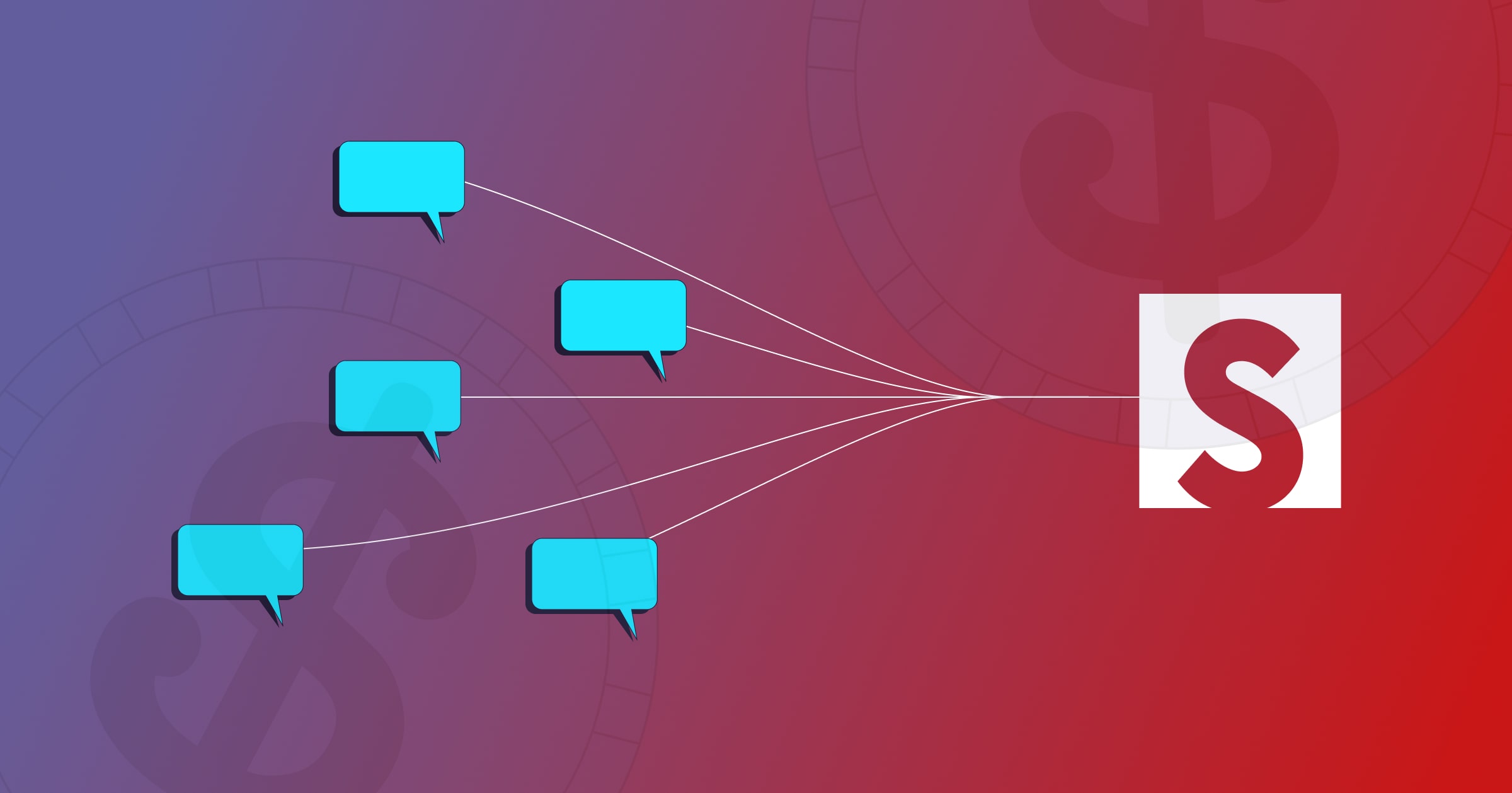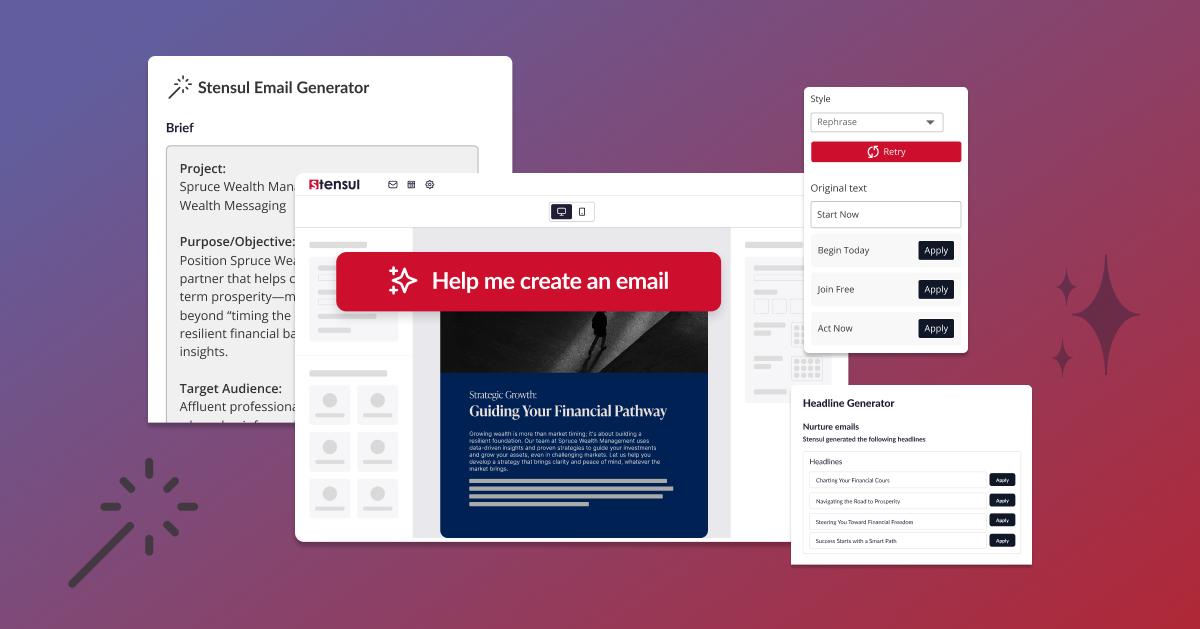Your organization uses a MAP/ESP (marketing automation platform or email services provider) every day. You know it gives you and your team time to spend on tracking, analyzing, and strategy, so your subscribers’ experience is the best it can be.
Although it might be serving its purpose to automate repetitive, manual tasks, there are three reasons to reevaluate your existing MAP/ESP and consider changing it to another platform:
- Your company has undergone some kind of change and, with it, the type of MAP/ESP it needs has changed as well.
- The MAP/ESP is not performing as well as you need it to.
- The vendor providing the MAP/ESP isn’t performing as promised.
To be sure, opting to, once again, go through the selection and implementation process around a MAP/ESP isn’t something done on a whim. After all, you know what was involved in getting the one you have in place. However, if there’s evidence that any one of the three reasons to change a MAP/ESP is even slightly apparent, you need to take action. Delaying a change may compound the problems you’re already experiencing or that may be emerging. Those are problems that can impact you, your team, and your company’s top- and bottom-line performance.
How your company can drive a MAP/ESP change
When your marketing organization matures, it’s worth asking a few questions: “Have we outgrown our MAP/ESP? Have we gone beyond the capabilities of the platform we’re using? Beyond that, has the team reached a level of marketing operations expertise that lets them handle a more sophisticated solution?”
Answering “yes” to these questions is less a negative about the MAP/ESP and more a positive about your company. The situation is similar to buying a first house, called a starter home, for an apparent reason. It serves your purposes initially. Then there’s growth of one kind or another. You need more space and more amenities in time. Similarly, you may consider expansion or enhancement of your current MAP/ESP only to learn that the vendor can’t support you in a way that will serve your needs.
Then there’s the forced change that occurs when your company is acquired. In most cases, when that buyer uses a different MAP/ESP, you’ll need to change because standardizing on one platform type across an organization is considered a best practice. Nonetheless, it’s still important to know the capabilities you’ll need, even in a new corporate environment.
How the MAP/ESP you’re using can drive a change
Implementing a MAP/ESP is a little like a first date. Expectations are high, and the potential for disappointment is slightly higher. You’ve been through a lot to this point. That new MAP/ESP is supposed to solve all your troubles.
After examining hundreds of MAP/ESP migrations, Stensul found four main reasons existing platforms organizations needed to replace their existing system:
- MAP/ESP adoption rate
- Blend of features and functions
- Martech stack integration
- Scalability
MAP/ESP adoption rate
Marketers or others in your organization not using the MAP/ESP will drive a change. When the adoption rate—the level of usage by those who ought to be using the platform—is low, there’s little benefit your company can realize from it. There are two types of users—admins and end users.
Was your admins’ onboarding experience less than stellar? If they aren’t given adequate training and/or management support, they won’t succeed, and usage will plummet. Keep in mind that you can have the same problem with a new MAP/ESP. You need to avoid that outcome at all costs because admins are the ones who foster adoption and manage and maintain the platform. If they’re not on board with what you’re considering and see value in a new platform—and see themselves enjoying using it—there’s little chance of success.
With end users, you need to determine what it is about the MAP/ESP that keeps them from using it more, if at all. Use that insight to help choose a software process that overcomes their resistance. If you change to a MAP/ESP that better suits your needs and those of your end users, everyone will benefit.
Blend of features and functions
After using the MAP/ESP for a while, you and your team may realize it can do certain things well and other things less so. This discrepancy occurs because you’re using the system in a real-world environment and can recognize its deficiencies. It makes no sense to continue using a MAP/ESP if you cannot add missing features to the platform. That’s ample reason to make a change.
If you find yourself with a MAP/ESP stuffed with unnecessary features that are too complex for most of your users and unsuitable for your organization, learn your lesson and move on.
Different technologies are often cobbled together when a MAP/ESP doesn’t have enough features or too many, in the hope that doing so will solve the problem. Unfortunately, this approach only creates a new one that can be more frustrating. The key is to use a MAP/ESP with the right blend of features and functions that makes everyone’s life easier while improving throughput and performance.
Martech stack integration
A MAP/ESP might be the last step in your process to get marketing emails sent to subscribers, but it shouldn’t sit on its own, detached from the rest of your martech stack. The more you integrate the layers of your stack, the better it—and each component—will perform. That approach holds true especially for a MAP/ESP. For example, if you create emails outside a MAP/ESP instead of in its email builder, you’re able to make better use of the core capabilities and strengths of the platform—the reason you bought it in the first place. In turn, by not building emails in a MAP/ESP, you’re keeping inadequately trained members of your team out of it. Doing so reduces the risk to your operation and your company’s reputation. Inadvertently sent emails from MAPs/ESPs by well-meaning interns are not laughable situations.
Scalability
It’s great that your company can grow, but if your MAP/ESP can’t grow with you, that’s a reason to change. If it can’t scale to your current or future needs, you must move to a platform capable of keeping up with your growth trajectory. Email issues related to scalability include throttling, outages, and other deliverability matters. If these or related things keep cropping up, it’s time for a change.
How your MAP/ESP vendor might drive change
Purchasing a new system for your martech stack is exciting and sometimes emotional, even with emotions that can be less than positive. Yes, buyer’s remorse does occur in a corporate setting.
Imagine you’ve just gotten a new MAP/ESP up and running. Within a surprisingly short period, questions swirl around in your head:
- What have I bought?
- Is this way more than I need?
- Why is it costing me more than I imagined?
- What did my vendor sell me?
It happens, and when it does, you need to make some tough but necessary choices by asking these questions: “Do I try to make it work? Or do I cut my losses and start the process again to find a MAP/ESP that’s truly right for the organization—where it is now and where it’s going?”
Even though the focus seems to be on a piece of technology, nothing drives a change as swiftly as the unmet promises of your MAP/ESP vendor. As confidence in that vendor erodes, the impetus to search for a new solution gains momentum.
It’s not just the vendor’s promises of the platform’s performance. It’s also the performance of the vendor. Any time your MAP/ESP is down or not performing as expected, it’s costing you time and money. If you have team members responsible for maintaining the system but can’t seem to get it right, look to the vendor. Did they onboard your team correctly? Has their training been updated? Is your vendor’s response to support requests handled in a timely and competent manner? If the answer is “no” to any of these questions, your vendor isn’t doing you any favors, and you may consider finding a new one with a new MAP/ESP.
How to manage a MAP/ESP migration simply, quickly, and with less expense
Get an email creation platform. It’s as simple as that. Including an email creation platform in your MAP/ESP migration process will make it simpler, quicker, and, in the end, less expensive.
To begin with, it lets you continue to use the templates you’ve used in your current MAP/ESP. That means you do not need to rebuild them to work with a new MAP/ESP, cutting template-related time in half and saving money.
Further, your developers spend time fixing templates for another MAP/ESP, letting you have them attend to matters more in line with their skill set.
By placing an email creation platform at the center of your email creation process, you’re better able to integrate your martech stack and optimize the value and performance of those applications while reducing the risk that comes with copying and pasting lines of code from one app to another .
Regardless of the MAP/ESP being used or that will be used, an email creation platform implemented before a migration makes it much simpler. Instead of learning how to produce an email in the new MAP’s/ESP’s email builder, marketers and designers can create emails in the email creation platform, which is designed expressly to make emails. There is no delay or slow-down in email creation. In organizations with multiple MAPs/ESPs, an email creation platform standardizes the creation process, avoiding errors and loss of productivity by all involved.
With an email creation platform, you can select the MAP/ESP that best serves your needs. You can set it up to emphasize its core strengths—handling list management, drip/nurture programs, deployments, and other functions other than email creation. This way, te only thing you need to do is to update personalization tags.
To learn more about this platform, download the Stensul eBook, An introduction to efficient email creation.


